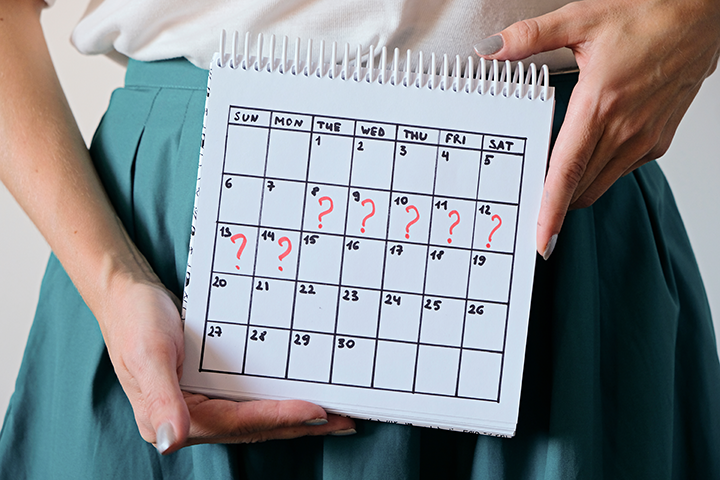It’s a familiar time of the month - Mother Nature calls and you get your menstrual cycle. While it isn’t fun, it gives your health care team vital information about your overall and reproductive health.
What Happens During Your Menstrual Cycle?
Your menstrual cycle is a 28-day process caused by the rise and fall of your hormone levels. The specific events happening during your menstrual cycle are separated into four phases:
Menses Phase (Day 1 – 5): If you aren’t pregnant, the lining of your uterus sheds and causes bleeding for three to five days.
Follicular Phase (Day 6 – 14): Your estrogen levels rise and cause the lining of your uterus to grow and thicken. The follicles in your ovaries are also growing. Between days 10 – 14, one of your follicles will form a mature egg.
Ovulation (Day 14): Your ovary releases its egg after a sudden increase in hormones.
Luteal Phase (Day 15 – 28): Your egg leaves your ovary and travels through your fallopian tubes into your uterus. If your egg is fertilized and attaches to your uterine wall, you’re pregnant!
What’s a “Normal” Period?
While the process is the same for everyone, the cycles themselves can vary from person to person. Your cycle is considered normal if:
there are 21 – 35 days between your periods
your period lasts around three to seven days

What Can Impact Your Cycle?
It’s normal for your period to vary from month to month. You may find you’re bleeding heavier or for a longer amount of time or have irregular cycles that don’t always line up with your calendar.
The following factors and a variety of others can impact your menstrual cycle:
Metabolism and diet. Your body needs energy to complete your menstrual cycle. You may stop ovulating if you aren’t getting enough calories, are underweight or exercising heavily. Being overweight can also affect your hormone levels and your cycle.
Hormone regulation. Certain medications like birth control and other medical conditions can cause changes in your cycle.
Stress and sleep. Both can affect your body’s hormone levels and cause an irregular cycle.
What’s an Irregular Period?
Wondering if your periods are “normal?” A few examples of an irregular period are:
less than 21 days or more than 35 days apart
not having a period for 90 days
bleeding that’s significantly heavier or lighter than usual
bleeding for more than seven days
severe pain, cramping, nausea, or vomiting
spotting between periods
If you’re concerned your period may be irregular or have questions about your cycle, consult with your Primary Care Provider or OB-GYN.
How to Tell When It’s Time for Your Period?
Just like the cycle itself, symptoms of menstruation are different for each person. A few common signs that it’s your time of the month are:
cramps
mood changes
trouble sleeping
headaches
food cravings
bloating
breast tenderness
acne
Resources for TRS-ActiveCare and TRS-Care Standard
Provider Finder®
Search for an in-network OB-GYN or PCP.
Ovia Health Apps
Your plan includes the Ovia Fertility & Cycle Tracker at no additional cost to you. The Ovia app can also help with menopause.
To get started with Ovia:
Download any of the Ovia Health apps from the Apple App Store or on Google Play.
When signing up, choose “I have Ovia Health as a benefit.”
Then select Blue Cross and Blue Shield of Texas as your health plan.